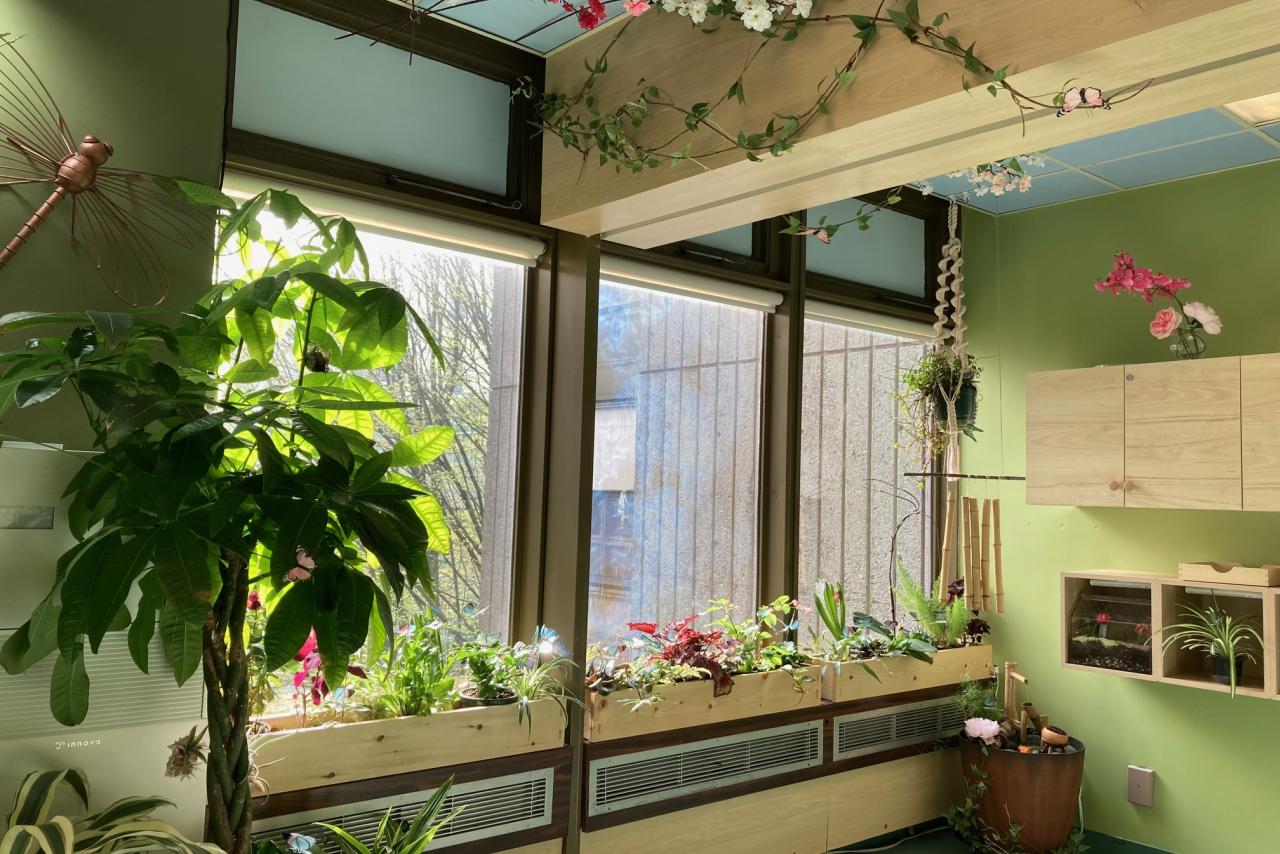Story
Bringing nature indoors: Tranquility Lounge provides therapy for long-term care residents

A Horticultural Therapist and the Recreation Therapy team at a Vancouver Coastal Health long-term care centre aimed to bring nature to residents with a recent project.
Together with residents, the team completed a "Tranquility Lounge" at Banfield Pavilion, a long-term care centre in Vancouver General Hospital, and a portable version that can be brought room-to-room, called the Sensory Mobile Immersive Landscape Experience (S.M.I.L.E).
Time spent in nature, with the smells of plants and flowers and the sound of a running creek or a bird's song, improves mental wellness and overall quality of life. The S.M.I.L.E is a height-adjustable overbed table displaying natural objects. Custom-printed landscape scenes can be hung behind the table, and a mobile device can play video or sound.
The S.M.I.L.E is a height-adjustable overbed table displaying natural objects. Custom printed landscape scenes can be hung behind the table, and an iPad can play video or sound.
The lounge and S.M.I.L.E are multi-sensory and accessible for a range of abilities. The lounge features large-scale landscape images, lush greenery, plants and natural objects to touch, the sounds of water, wind, rain and bird songs. The themes for both the lounge and the S.M.I.L.E rotate based on residents’ interests and the seasons.
The lounge and portable experience serve as alternatives to the outdoor garden at the care home. With funds provided by the VGH and UBC Hospital Foundation, a group of dedicated residents worked together with Lindsay VanHuizen, Horticultural Therapist, over approximately six months to create a space that invites rest and rejuvenation.
In late January, they held an open house to celebrate the project and share the creation of the lounge with other residents and staff at the Pavilion.
“Many hands, hearts, and minds have worked together," Lindsay says. “Residents have painted, deliberated, and offered their creativity and insight to make the space what it is," she adds. Lindsay shares that the benefits of engaging with nature can include reducing depression, aggression and stress, decreasing use of behavioural medications, and improving social relationships.
“I didn't expect this amount of colour; it just adds so much vitality," a resident of Banfield Pavilion shares.
Everyone can benefit from time in a natural space. Lindsay has some tips for creating your own:
- Know your plants: Many plants are beautiful, but toxic. Some can be fatal if ingested, or cause major skin irritation and digestive upset. If you don't know the name of a plant, find out before bringing it into your space. Research its toxicity. If in doubt, don't use it.
- Five Senses: Know which plants offer which sensory experience and how you access that experience (for example, many leaves need to be scratched or rubbed to release a scent). Include variety, such as rough and smooth objects to touch. Also consider incorporating other sensory tools, such as aromatherapy or rainsticks.
- Comfort: Consider the room's temperature, lighting, and whether chairs are comfortable, and in a location with an inviting view.
- Person-Centered: The success of nature interventions depends on the participant's ability to connect with elements they find meaningful. Customizing the experience to each person is a vital condition of creating a caring space.


